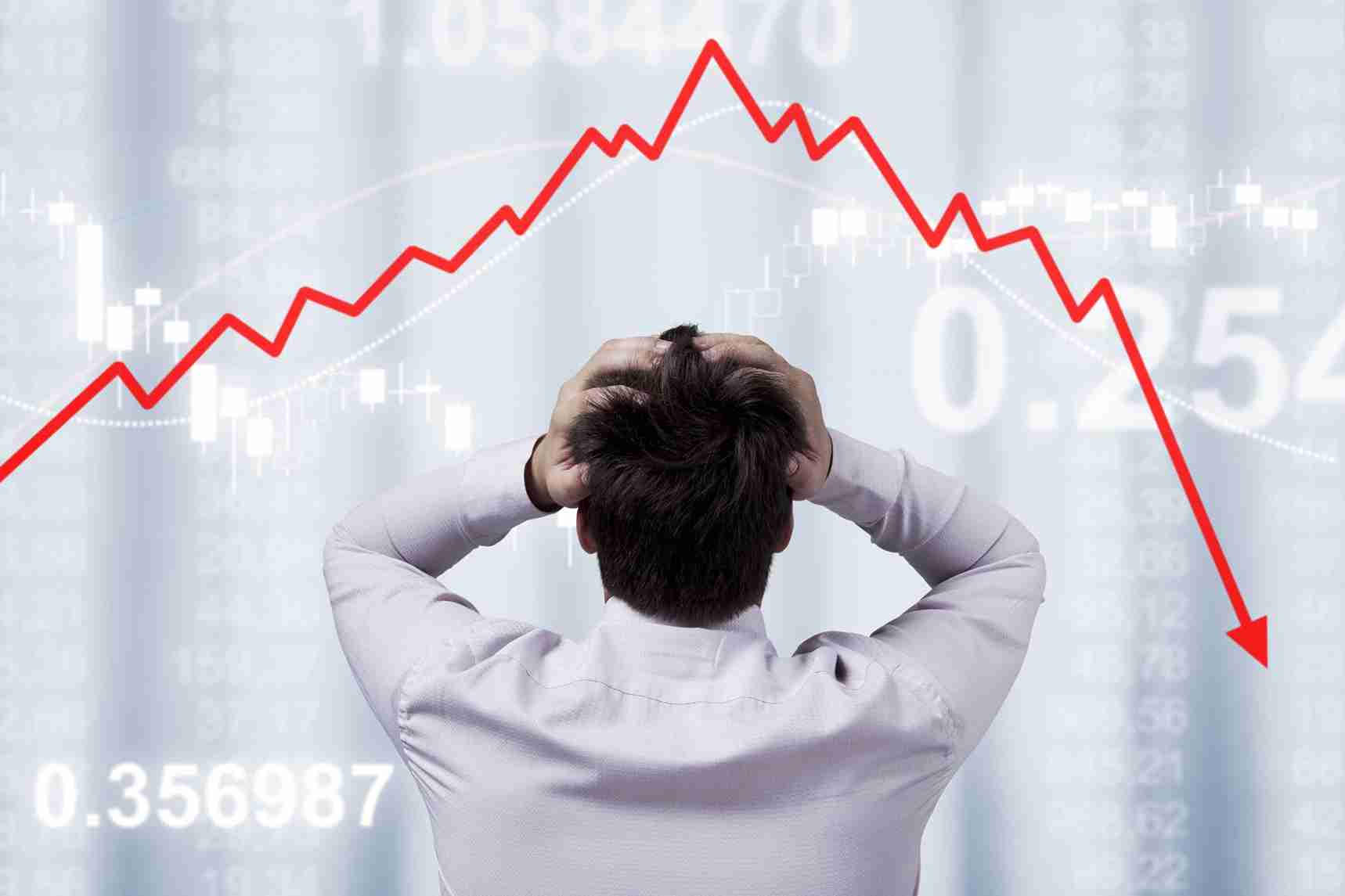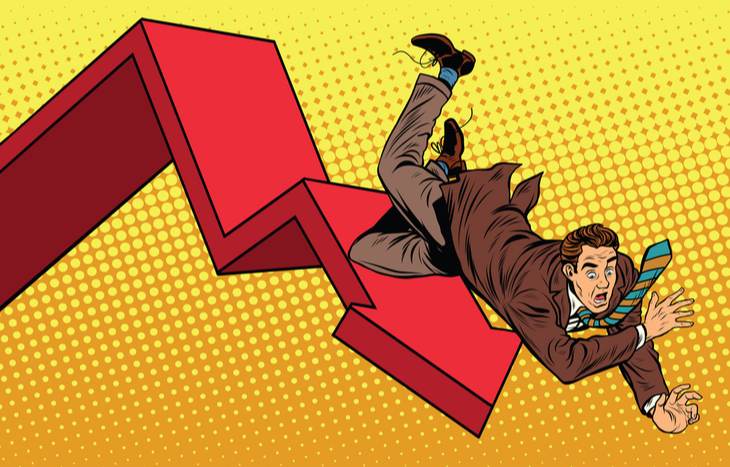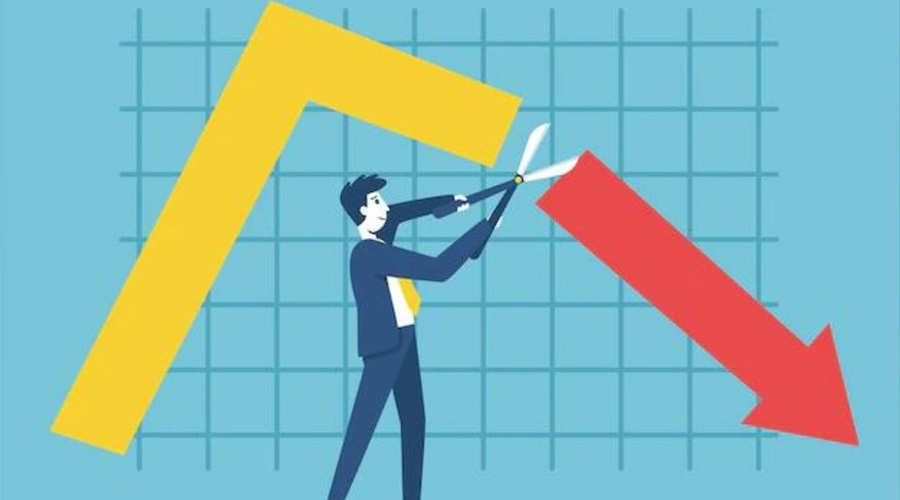How to protect yourself in a stock market crash isn’t just a question for the wary. It’s vital know-how for anyone building their nest egg. Market tumbles can swipe your gains clean. But you’re not helpless. By understanding the nature of stock market crashes and acting on solid strategies, you can armor your finances. Today, I’ll show you what to tuck away in your investment toolkit. Whether it’s picking crash-resistant assets, adopting proactive risk management, or crafting your comeback post-crash, I’ve got you covered. Dive in, and let’s bulletproof your portfolio together.
Understanding the Nature of Stock Market Crashes
Historical Trends and Trigger Points
Crashes shock us all. Prices drop fast. It’s part of the market cycle. It’s scary but normal. Often, a key event triggers the fall. It could be bad news about jobs, a hit to big companies, or panic from investors. Sometimes no one sees it coming. Other times, warning signs hint at trouble.
We can learn from the past though. Think of the 2008 crash. Bad home loans fell apart, and down went the market. Before that, the dot-com bubble burst. Too much cash chased too few profits. Each downfall teaches something new.
By knowing history, we can spot trouble. Say, a stock climbs too fast; it might be a bubble. If many owe too much, that could spell trouble too. Watch the news. Check the numbers. A crash can seem sudden, but signs are often there.
Psychological Impacts on Investors
Now, let’s talk feelings. A market drop can make you want to sell fast. But wait! That’s fear talking. And fear can steer you wrong. In crashes, our hearts race. We think of the worst. Selling it all feels safe, but remember, crashes happen. They also end.
We must keep cool, think long, and not let fear win. Have faith in your plan. If it’s made for tough times, stick with it. After storms, the sun comes back. Be ready for that. If your money is spread out, in different kinds of investments, you’ll bounce back better. Think ships in a storm – it helps to have a strong fleet.
Also, talk to someone. A money guide. A trusted friend. They can help you see clear. They remind us: investing is not just about today. It’s about the long haul. When a crash hits, think ahead. What will your future self say? “Thanks for not selling that day?” Maybe so.
Learn from this. Each crash shifts the market. Some lose. Some win. Your aim? Be on the winning side. Watch the market with a keen eye. Keep your head while others may lose theirs.
And so, while the nature of crashes carries a whiff of unpredictability, your response need not be a gamble. Know your history, recognise the signs, and most importantly, manage your emotions. The one who keeps a steady hand on the tiller is the one who weathers the storm and sails into calmer waters.
Remember, crashes don’t last forever. They are part of a cycle – a harsh, often painful part, but a cycle nonetheless. History has shown this time and again. You’re not just guarding your finances; you’re protecting your peace of mind. Stay informed, stay calm, and stay the course. The storm will pass, and you’ll be ready to catch the upswing when it does.
Building a Crash-Resistant Investment Portfolio
The Role of Diversification and Asset Allocation
You hear it often: “Don’t put all your eggs in one basket.” It’s key in investing, too. Spreading your money across different types of assets is diversifying. It’s like a safety net for your money. During a crash, if one part of your portfolio drops, the rest can keep you steady. Think about mixing it up with stocks, bonds, real estate, and more.
Asset allocation matters, too. It means picking the right mix for you. Your age, goals, and stomach for risk guide this choice. Younger folks might lean more on stocks. Older folks or those who don’t like ups and downs might pick more bonds. Getting the balance right is a must.
Identifying and Integrating Safe-Haven Assets
Now, let’s get real about safe-haven assets. These are the investments that stand strong when others fall. Gold is a classic. It’s been a go-to for safety for ages. Then there are bonds – they’re like the calm buddy that doesn’t lose its cool in a crash. Remember, not all bonds are the same. U.S. Treasury bonds are top-notch for safety.
Don’t forget about cash, too. It doesn’t grow like stocks, but it won’t crash either. Having some on hand means you can buy when prices are low or just feel at ease. Defensive stocks are another smart play. They are the stocks of companies that sell things we always need, like food and power.
Let’s not overlook a major point: an emergency fund. It’s a cash stash for life’s “uh-oh” moments, separate from your investments. When you lose a job or your car breaks down, you’ll be glad it’s there.
Here’s the deal with a stock market sell-off: don’t panic and sell everything. That’s a quick way to lose out. Instead, sit tight. History shows markets go up and down, but they usually climb back over time.
Putting money in index funds during downtrends can also be wise. They spread your cash across many stocks. This cushions the blow of a market drop. Plus, they’re usually cheaper than paying a manager to pick stocks.
Lastly, know that it’s not about timing the market. It’s about time in the market. Stick with it for the long haul, and crashes become bumps in the road, not dead ends.
In sum, protect your hard-earned cash with a smart plan. Mix up your investments, use safe-haven assets, and build that emergency fund. Stay cool when things get shaky, and remember it’s a marathon, not a sprint. This way, when the market takes a dive, your finances won’t go belly up with it.
Proactive Risk Management Strategies
Implementing Defensive Investments and Hedging Techniques
When stocks drop, you might worry a lot. Some investments, like bonds or gold, can help. They often do well when stocks do not. This is called defensive investing. It sure can soften the blow during a stock market crash. Gold is like a shield in battle, keeping your money safer. Bonds can be less shaky than stocks. So, they are like a steady friend when times get rough.
Hedging is another smart move. Think of it like insurance for your investments. It can protect you from big messes. You can do this by using options or other tools. It’s like putting on armor to keep your money safe when the stock market is wild.
The Use of Stop-Loss Orders to Limit Losses
A stop-loss order is like a safety net. It’s a rule that sells your stock if the price falls to a certain point. This helps you to not lose too much money. It tells your broker, “If my stock drops to this price, sell it!” That way, you can stop a small loss from getting bigger.
Picture this: you buy a stock at $100. You set a stop-loss order at $90. If the stock price drops to $90, your broker sells it. So, you don’t bear a loss more than $10 per stock. It’s a smart way to have control and act fast without letting panic cloud your judgment.
Using these strategies is like being a wise captain who steers his ship safely through a storm. You can’t stop the storm, but you can surely sail in a way that keeps you and your ship from sinking.
Adapting Your Investment Approach Post-Crash
Portfolio Rebalancing and Long-Term Investment Strategies
After a crash, it’s key to check your mix of stocks, bonds, and other things. This mix is your asset allocation. See if it still fits your goals. If not, time to make some changes.
Rebalancing is like resetting your portfolio. Say stocks just took a big hit. Your plan might call for more bonds to keep things steady. In that case, sell some stocks and buy more bonds. This brings your portfolio back in line with your risk plan.
Stick to your long-term plans. Don’t ditch stocks just because they’re down. Over many years, they tend to go up. It’s more about time in the market, not when to buy or sell.
Investing can be like riding a roller coaster. Fast drops scare us, yes. But get off during the dive and you miss the climb back up. So hang tight, if you can. A long ride often ends up high.
The Importance of Having an Emergency Fund and Cash Reserves
When markets fall hard, cash is king. See, if you have cash, you can avoid selling stocks when they’re down. This is where your emergency fund comes in.
Some say you should save up enough cash to cover 3-6 months of living. This is your emergency fund. It’s for when things go south, like losing a job. Having this fund means you don’t have to sell stocks in a pinch.
Also, think about holding more cash in a crash. Why? With cash, you can buy stocks cheap. And later, they might go up a lot!
So, when markets go wild, check if you have enough cash on hand. If you don’t, start saving. It can stop a lot of stress later.
In all, remember this: A smart plan thinks about the bad times, not just the good. It’s about balance and sticking to the course. And having cash ready means you can stay calm and take chances when others can’t.
To sum up, rebalance your assets and focus on long-term goals post-crash. Keep an emergency fund and extra cash. These are solid steps to protect your finances from the big ups and downs of the market.
In this post, we dove deep into stock market crashes. We looked at why they happen and how they shake up investors’ nerves. Then, we tackled building a tough portfolio with mix-and-match assets and safe spots to shield your cash. We also covered smart moves to keep risks low, like defense plays and stop-loss orders. Finally, we talked about bouncing back after a crash with smart rebalance and keeping cash on hand for rough times.
Bottom line: Crashes are rough, but they don’t have to wipe you out. Plan well, spread your bets, and stay cool. That way, when markets shake, you’re set to ride it out and bounce back. Keep these tips in hand, and you’ll be on track for the long haul. Stay sharp, stay ready, and keep your investments safe.
Q&A :
How can I safeguard my investment portfolio during a stock market downturn?
To protect your investments when the market takes a nosedive, consider diversifying your portfolio across various asset classes, including stocks, bonds, and commodities, which can help mitigate risk. Rebalancing your portfolio regularly to maintain your desired level of asset allocation is essential. You may also want to explore defensive stocks known for their stability during economic fluctuations, or consider setting stop-loss orders to limit potential losses on your holdings.
What strategies should I employ to minimize losses in a stock market crash?
In the face of a market crash, it’s crucial to stay calm and not make hasty decisions based on emotions. Strategies to minimize losses include having a well-thought-out investment plan with a long-term perspective, keeping an emergency fund to avoid selling assets at a loss, and potentially using hedging strategies like options for risk management. Additionally, continue to educate yourself on financial literacy, so you’re better prepared to make informed decisions.
Is it wise to sell my stocks during a market crash?
Selling stocks during a market crash can often lock in losses and miss out on the potential recovery. Instead, review your investment strategy and consider if your portfolio aligns with your risk tolerance and long-term goals. If your investments are fundamentally sound, it may be wise to hold onto them and wait for the market to rebound. Always consult with a financial advisor to help guide your personal investment decisions during volatile periods.
How can I anticipate a stock market crash to protect my investments?
Predicting a stock market crash with certainty is challenging, but there are indicators that can signal economic trouble ahead, such as high market valuations, excessive leverage, and economic downturns. Stay informed about market trends, economic indicators, and geopolitical events that could impact the market. Building a resilient and well-diversified portfolio can also prepare you for market fluctuations regardless of your predictive capabilities.
What emergency moves can I make during a stock market crash to protect my assets?
If the market crashes and you’re concerned about protecting your assets, you can consider several emergency moves like temporarily increasing your cash holdings or shifting to more conservative investment assets like higher-grade bonds or bond funds. Some investors may explore purchasing inverse ETFs that rise when the market declines or look into assets traditionally considered ‘safe havens’ such as gold. Remember to consult a financial professional before making significant changes to your investment strategy during market turmoil.






